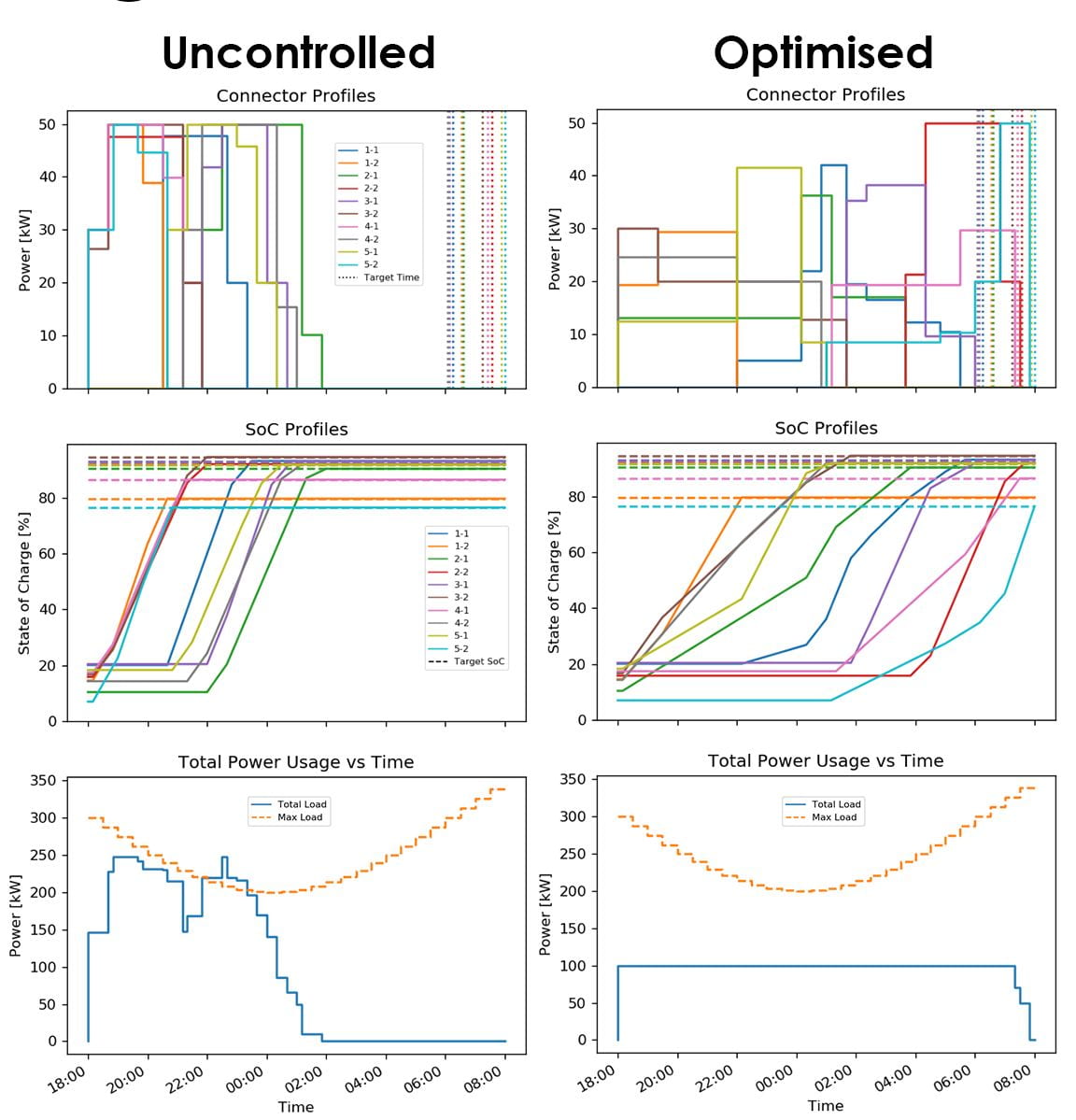OPTIMAL ELECTRIC VEHICLE CHARGING WITH EVISI
EVisi works with ORUA to provide optimised charging solutions for electric vehicle fleets.
Banner image by Michael Marais on Unsplash


Electric Vehicle Fleet Chargers – Power Optimisation Model
Interested people please contact Mike O’Sullivan at michael.osullivan AT auckland.ac.nz.
The research & development (R&D) plan for the ME project is as follows.
- Demand forecasting
- Forecasting site/building load on each transformer.
- AWS ML RNN type forecasting. Input variables incl Weather, Season, Date, Time, Day type (holiday, weekend etc), Building
- Output variable is load on transformer excl EV charging
- Forecasting pattern over vehicles arriving at chargers
- Outputs variables incl charge plugin time, charge unplug time, battery size,
- Outputs from both a. and b. inform “ghost vehicle” component of optimiser
- Forecasting site/building load on each transformer.
- Update existing optimisation model improvements through bus company system trial (incl existing ghost vehicle testing | improvement for overall system efficiency and operation)
- Objective – update existing model with improvements to existing ghost vehicle predictions.
- Improve and automate the prediction of ‘ghost vehicles’ modelling to optimise this prediction to get model to work in production.
- Improve transformer power availability profile optimisation solve speed and design of existing model to ensure optimisation works through demand peak transformer capacity constraint. Very important for apartment blocks.
- Existing model needs to work for very constrained power availability over evening peak for apt buildings (key market etc)
- Include Time of Use and Spot pricing for Demand and Volume components for lowest cost optimisation.
- Stationary Battery charge / discharge function in the optimisation model to support constrained power supply. Batteries are being used for this purpose in other countries already and very likely to provide a cheaper option for apartment buildings compared to increasing capacity of site transformer.
- Demand Response offer builder to work with Transpower systems (modified optimiser model).
- Calculate how many kW could be offered as Demand Response during a certain time of day based on kW availability and forecast charger demand params.
- Integrate DR offer selection (by Network customer) into the optimisation model to completes the DR offer process flow back to the DR adjusted transformer constraint profile)
Other more routine business operations R&D requirements in addition to above are:
- Improve optimiser Container and AWS infrastructure
- Interact with Bus operator and other companies on improvements to existing charger optimisation models.
- Design new variant models for new site installations, particularly apartment buildings with partner charger software providers.
